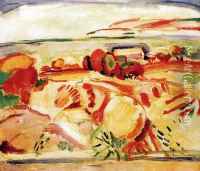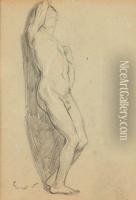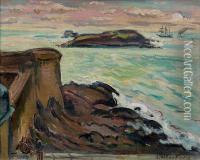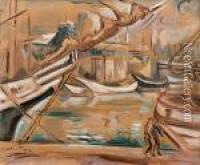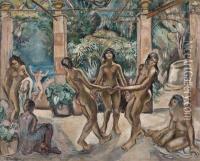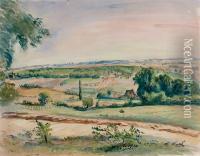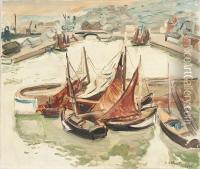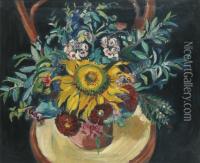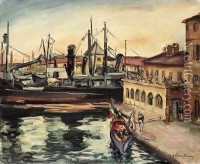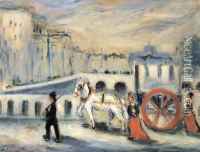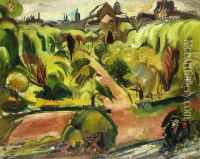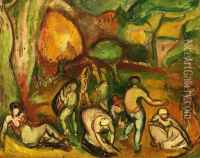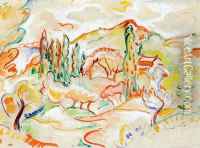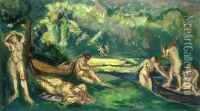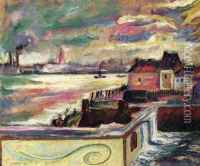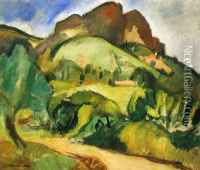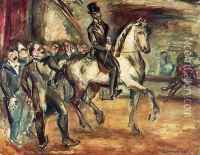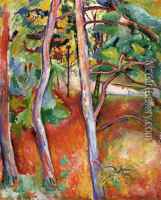Emile-Othon Friesz Paintings
Émile-Othon Friesz, born Achille-Émile Othon Friesz on February 6, 1879, in Le Havre, France, was a prominent French artist known for his role in the Fauvist movement. Friesz began his artistic journey at the École des Beaux-Arts in his hometown, where he met Henri Matisse and other future Fauvists. They formed a collective that would become central to Fauvism, characterized by its use of bold, non-naturalistic colors and strong painterly qualities.
In 1899, Friesz moved to Paris to attend the prestigious École des Beaux-Arts and continued to develop his unique style. His early work was influenced by Impressionism, but he quickly embraced the more vivid palette and simplified forms of the Fauves. The Fauvist period was brief but intense. Friesz's participation in the 1905 Salon d'Automne in Paris, alongside Matisse, André Derain, and Maurice de Vlaminck, marked the public debut of the style that shocked the art world with its radical use of color and brushwork.
Despite his association with Fauvism, Friesz's style evolved after the group disbanded. He began to draw inspiration from the classical French tradition, which balanced his love of color with a newfound interest in structure and form. This led him to study the works of the Old Masters, and by the 1920s, his work displayed a more restrained palette and structured composition, often focusing on landscapes, still lifes, and nudes.
Throughout his career, Friesz traveled extensively across Europe. His journeys influenced his art as he incorporated elements of the different regions' landscapes and light into his paintings. He also worked on decorative projects, including murals, which allowed him to explore a larger scale and a different set of artistic challenges.
Friesz's later years were marked by a continuous refinement of his style and technique. He taught at the Académie Scandinave and the Académie de la Grande Chaumière in Paris, influencing a new generation of artists. Émile-Othon Friesz continued to paint until his death on January 10, 1949, in Paris. His work is celebrated for its contribution to the Fauvist movement and for the artist's lifelong dedication to exploring the possibilities of color and form.
